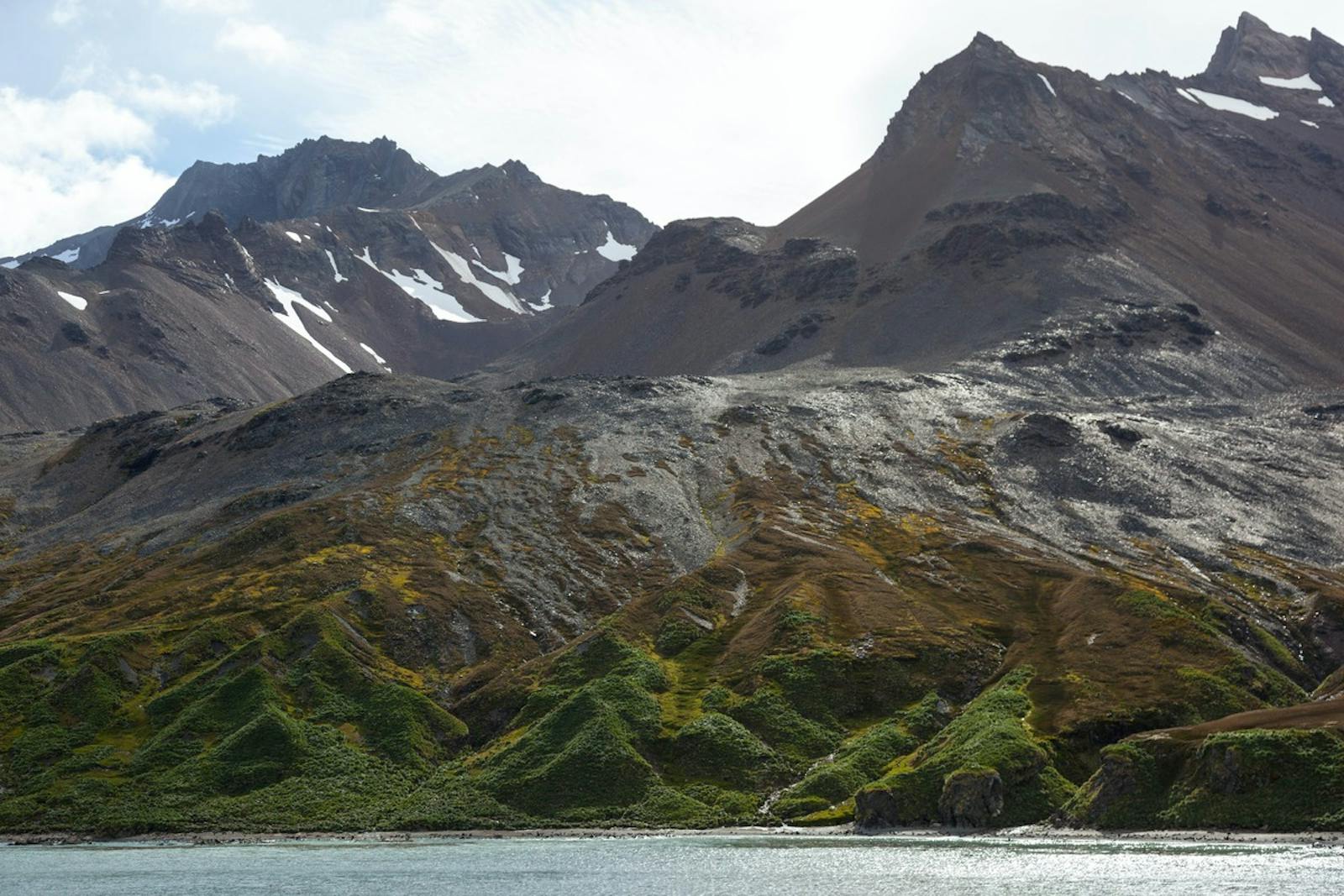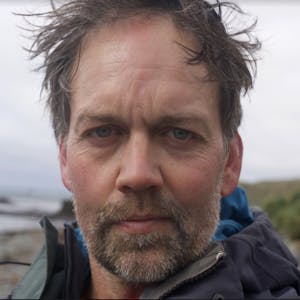Scotia Sea Islands Tundra
The ecoregion’s land area is provided in units of 1,000 hectares. The conservation target is the Global Safety Net (GSN1) area for the given ecoregion. The protection level indicates the percentage of the GSN goal that is currently protected on a scale of 0-10. N/A means data is not available at this time.
Bioregion: Antarctic Peninsula & Scotia Sea (AN2)
Realm: Antarctica
Ecoregion Size (1000 ha):
N/A
Ecoregion ID:
129
Conservation Target:
N/A
Protection Level:
N/A
States: Antarctica
The Scotia Sea Islands tundra ecoregion is made up of several islands across three main groups. These are some of the wildest and most inhospitable islands on Earth. They all lie south of the Antarctic Convergence (also known as the Polar Front) in the Southern Ocean and include South Georgia, the volcanic South Sandwich Islands, and the small isolated island known as BouvetØya (Bouvet Island).
These are cold, wet, and windy places, elemental in their beauty and renowned for the myriad of wildlife that inhabit them—including hundreds of thousands of flying seabirds, penguins, and seals. South Georgia and the South Sandwich Islands (also known as Islas Georgias del Sur y Sandwich del Sur) are claimed by the United Kingdom, but this claim is not recognized by Argentina. Bouvet Island is a Norwegian territory.
The extensive fur seal population was decimated throughout the region by seal hunters in the 1800s, but the population has rebounded, and these islands are now home to millions of seals. Species include high numbers of Antarctic fur seals, sub-Antarctic fur seals, and Southern elephant seals, the males of which can grow up to 4 m in length and weigh up to 4 tonnes.
.jpeg)
The flagship species of the Scotia Sea Islands Tundra ecoregion is the Antarctic fur seal.
The birdlife is remarkably rich and includes the world’s only sub-Antarctic songbird, the endemic South Georgia pipit. Eleven of the 30 species of breeding birds in South Georgia (including five species of albatross) are considered by the IUCN to be Threatened or Near-Threatened. South Georgia is home to seven of the 30 species currently listed under the Agreement on the Conservation of Albatross and Petrels (ACAP). Four species of penguin breed across the region: Macaroni, Chinstrap, Adelie, and King penguins.
The terrestrial life on South Georgia is also rich, and while there are no trees, there are a range of grasses, ferns, herbs, bryophytes, lichens, and algae, ranging from head-high tussock grass (Poa flabellata) to tiny endemic lichens. Most snow-free areas on Bouvet Island are so steep and subject to frequent avalanches that life for any plants is very hard—there are no vascular plants, and only mosses, crustose lichens, liverworts, and algae are able to survive. Very little is known about the invertebrate fauna of Bouvet, while South Georgia hosts a diverse range of species including beetles, flies, weevils, springtails, mites, and tardigrades.
There is a continuous human presence in South Georgia but no permanent inhabitants. Scientific bases are maintained by the British Antarctic Survey in three main locations at South Georgia. Expedition cruise ships regularly visit in the summer months, with thousands of tourists landing there yearly. Bouvet is visited much less, with only the occasional scientific expedition spending time ashore. Bouvet Island was designated as a nature reserve in 1971 and is classified as an Important Bird Area.
South Georgia has no formal terrestrial area protection, except for Bird Island, which is designated a site of scientific significance. Visitors are allowed but require a permit before landing. There are a range of invasive, alien species on South Georgia, mainly plants, but also invertebrates, and until they were recently eradicated, rats and reindeer. There are no invasive species present on Bouvet Island.
Even with the eradication of rats and reindeer from this ecoregion, invasive species remain one of the greatest threats. Priority conservation actions for the regions are to: 1) ensure rigorous biosecurity practices remain in place to prevent new introductions to near pristine Islands like Bouvet and minimize the likelihood of reintroductions; 2) undertake research to better understand how ecosystems respond following eradications; and 3) implement systematic conservation planning processes to ensure adequate protection of the environment, especially on South Georgia and the South Sandwich Islands.
-
-
- Smith R.I.L (1984) Terrestrial plant biology. In: Laws R.M. (ed.) Antarctic Ecology. Vol. 1. pp 61-162. Academic Press. London.
- Chown, S.L, Gremmen, N.J.M and Gaston, K.J. (1998) Ecological Biogeography of Southern Ocean Islands: Species-Area Relationships, Human Impacts, and Conservation. American Naturalist, 152, 562–575.
- Terauds, A., S. L. Chown, F. Morgan, H. J. Peat, D. J. Watts, H. Keys, P. Convey, and D. M. Bergstrom. (2012) Conservation biogeography of the Antarctic. Diversity and Distributions 18:726-741.
-
Cite this page: Scotia Sea Islands Tundra. Ecoregion Snapshots: Descriptive Abstracts of the Terrestrial Ecoregions of the World, 2021. Developed by One Earth and RESOLVE. https://www.oneearth.org/ecoregions/scotia-sea-islands-tundra/
-



